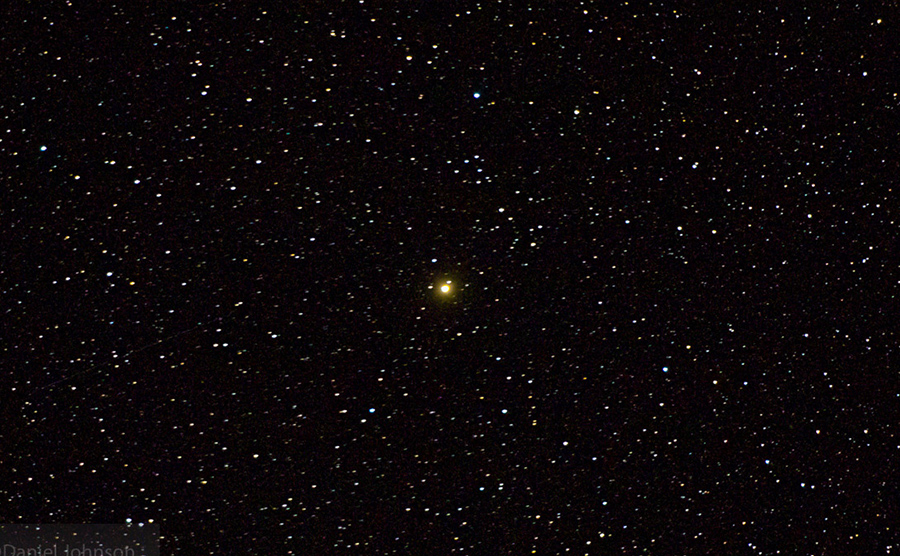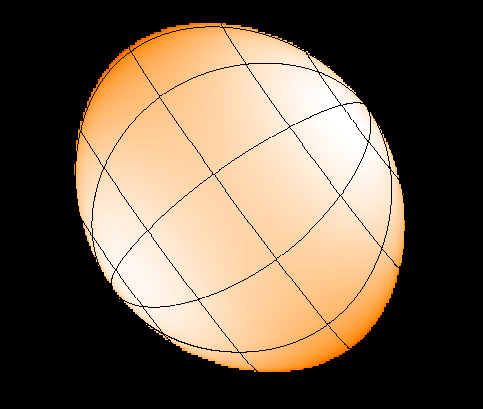
Meet Alkaid, the Big Dipper’s Handle
Alkaid is the end star of the Big Dipper's handle, a bright-blue example of a nearby B-type star.

Meet Wezen, a Yellow Tail for a Big Dog
Wezen, a yellow supergiant more than 1,600 light-years from Earth, is also the tail of the Canis Major constellation.

Meet Bellatrix, the Amazon Star
It's fitting that Bellatrix, the star at Orion's other shoulder, takes the name of "woman warrior," but it wasn't always that way.

Meet Enif, the Nose of Pegasus
Enif, the nose of Pegasus, is a supergiant star and the brightest member of the constellation. Find out more about this star and its place in our skies.

Meet Elnath in the Horn of the Bull
Elnath, the bright, blue-white star that marks one of the horns of Taurus, is a peculiar star in its own right.

Meet Mirfak, the Supergiant of Perseus
Mirfak, the brightest star in the constellation Perseus, is a yellow supergiant star with an uncertain fate.

Meet Scheat, the Peak of Pegasus
Meet Scheat, the orange giant star that peaks the Great Square of Pegasus in autumn skies in the Northern Hemisphere.

Meet Rasalhague, the Star with the Snake
Rasalhague, a star rotating so fast it has squashed itself, has a fascinating connection to the mythology of healing.

Meet The Sun, Our Home Star
In this installment of Meet the Stars, we get to know the nearest one: our Sun. Its properties — like its stability — likely led to life on Earth.

Meet Denebola, and Catch a Lion by the Tail
Meet Denebola, the tail of Leo, the Lion. This young star is a fast rotater but otherwise not that different from our Sun.

Meet Procyon, Orion’s Littler Dog
Meet Procyon, the brightest of the few stars in Canis Minor, the Lesser Dog. On its way to becoming a giant, this star is part of the Winter Triangle and Wniter Hexagon asterisms.

Meet Mizar and Alcor: The Horse and Rider
Mizar and Alcor, stars sometimes referred to as "the horse and the rider," serve as a vision test and an introduction to "double stars."

Tour 15 of the Brightest Stars on New Year's Eve (VIDEO)
Tour 15 of the sky's brightest stars all in one night on this New Year's Eve! This interactive Worldwide Telescope video will show you the way.

Meet Proxima Centauri: The Closest Star
Proxima Centauri is the dimmest and smallest of the Alpha Centauri system, but it has the honor of being the nearest star.

Meet Gacrux, the Top of the Cross
Gacrux is a treat for southern observers — the closest red giant to Earth and the tip of the famous Southern Cross.

Meet Castor, Six Stars in One
Castor, a prime ornament of the Gemini constellation and one of the brightest stars in the sky, is actually a system of stars with six unique members.

Meet Kochab, a Guardian of the Pole
Meet the stars: Kochab is no record-breaking bright star, but it's easy enough to find — and it may have played an important role through history.

Meet Aldebaran, the Bull’s Eye
Learn more about Aldebaran, the red-orange giant star that "follows" the Pleiades across the sky.

Meet Capella, the Goat Star
Capella is the sixth-brightest star in the sky — and it's more than one star! The main two stars in the system are near-twins, bright yellow giants.

Meet Arcturus: Guardian of the Bear
Arcturus is one of the brightest stars in the sky — a cool red giant in Bootes, the Herdsman, that's often tied mythologically to Ursa Major, the Bear.
